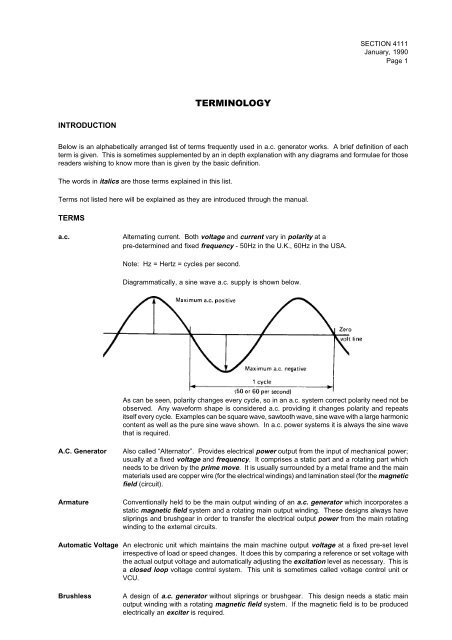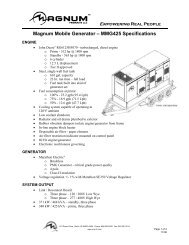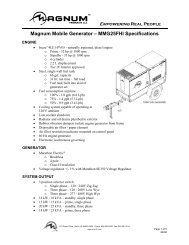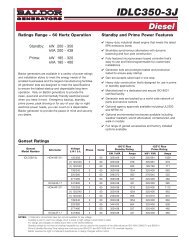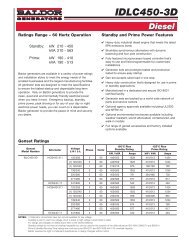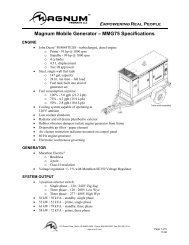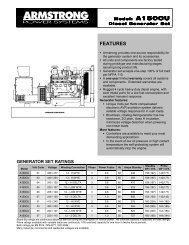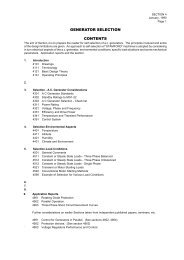GENERATOR SELECTION CONTENTS - Diesel Generator
GENERATOR SELECTION CONTENTS - Diesel Generator
GENERATOR SELECTION CONTENTS - Diesel Generator
Create successful ePaper yourself
Turn your PDF publications into a flip-book with our unique Google optimized e-Paper software.
INTRODUCTION<br />
TERMINOLOGY<br />
SECTION 4111<br />
January, 1990<br />
Page 1<br />
Below is an alphabetically arranged list of terms frequently used in a.c. generator works. A brief definition of each<br />
term is given. This is sometimes supplemented by an in depth explanation with any diagrams and formulae for those<br />
readers wishing to know more than is given by the basic definition.<br />
The words in italics are those terms explained in this list.<br />
Terms not listed here will be explained as they are introduced through the manual.<br />
TERMS<br />
a.c. Alternating current. Both voltage and current vary in polarity at a<br />
pre-determined and fixed frequency - 50Hz in the U.K., 60Hz in the USA.<br />
Note: Hz = Hertz = cycles per second.<br />
Diagrammatically, a sine wave a.c. supply is shown below.<br />
As can be seen, polarity changes every cycle, so in an a.c. system correct polarity need not be<br />
observed. Any waveform shape is considered a.c. providing it changes polarity and repeats<br />
itself every cycle. Examples can be square wave, sawtooth wave, sine wave with a large harmonic<br />
content as well as the pure sine wave shown. In a.c. power systems it is always the sine wave<br />
that is required.<br />
A.C. <strong>Generator</strong> Also called “Alternator”. Provides electrical power output from the input of mechanical power;<br />
usually at a fixed voltage and frequency. It comprises a static part and a rotating part which<br />
needs to be driven by the prime move. It is usually surrounded by a metal frame and the main<br />
materials used are copper wire (for the electrical windings) and lamination steel (for the magnetic<br />
field (circuit).<br />
Armature Conventionally held to be the main output winding of an a.c. generator which incorporates a<br />
static magnetic field system and a rotating main output winding. These designs always have<br />
sliprings and brushgear in order to transfer the electrical output power from the main rotating<br />
winding to the external circuits.<br />
Automatic Voltage An electronic unit which maintains the main machine output voltage at a fixed pre-set level<br />
irrespective of load or speed changes. It does this by comparing a reference or set voltage with<br />
the actual output voltage and automatically adjusting the excitation level as necessary. This is<br />
a closed loop voltage control system. This unit is sometimes called voltage control unit or<br />
VCU.<br />
Brushless A design of a.c. generator without sliprings or brushgear. This design needs a static main<br />
output winding with a rotating magnetic field system. If the magnetic field is to be produced<br />
electrically an exciter is required.


